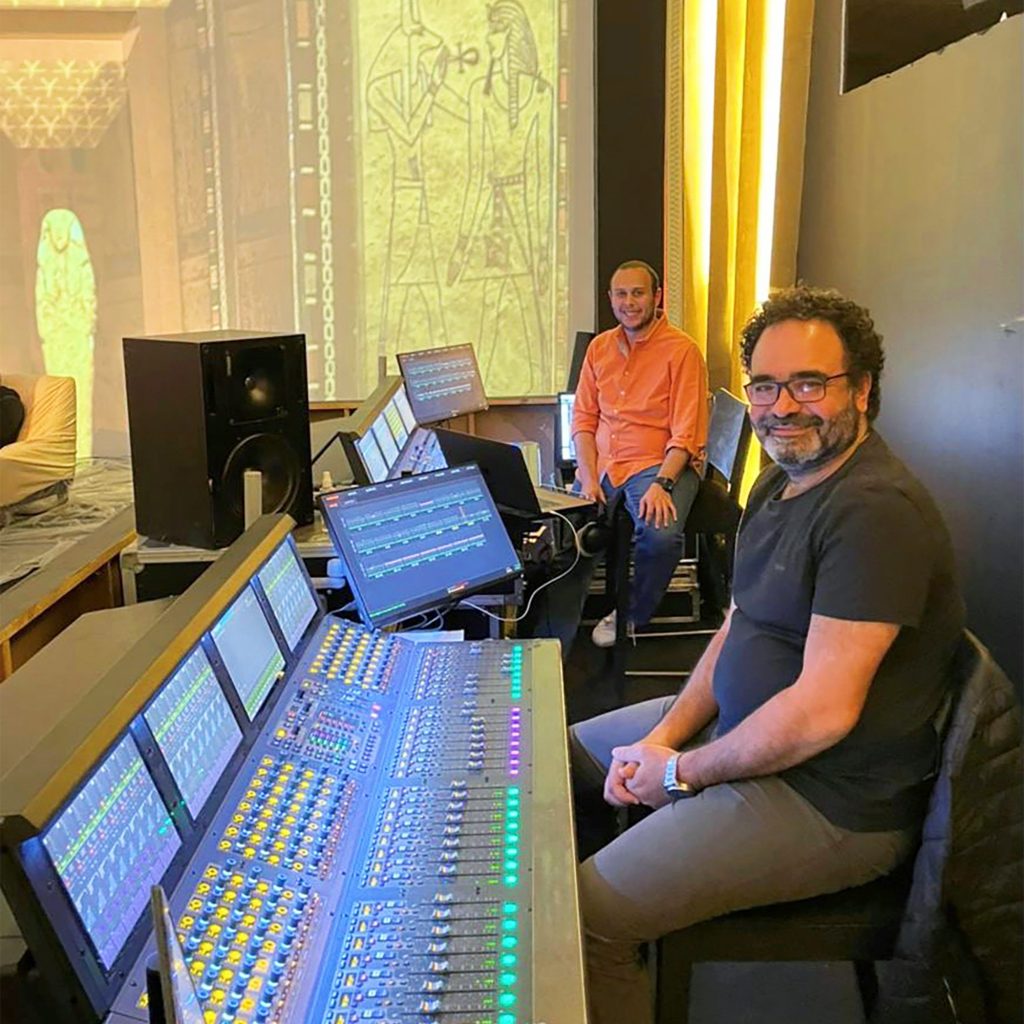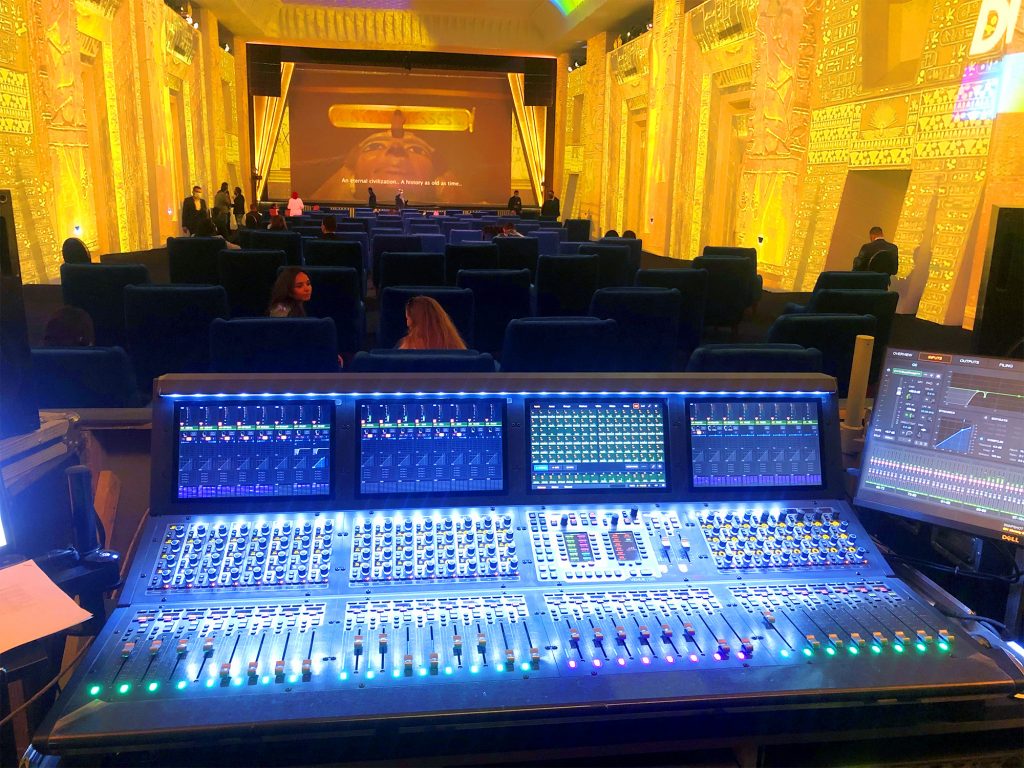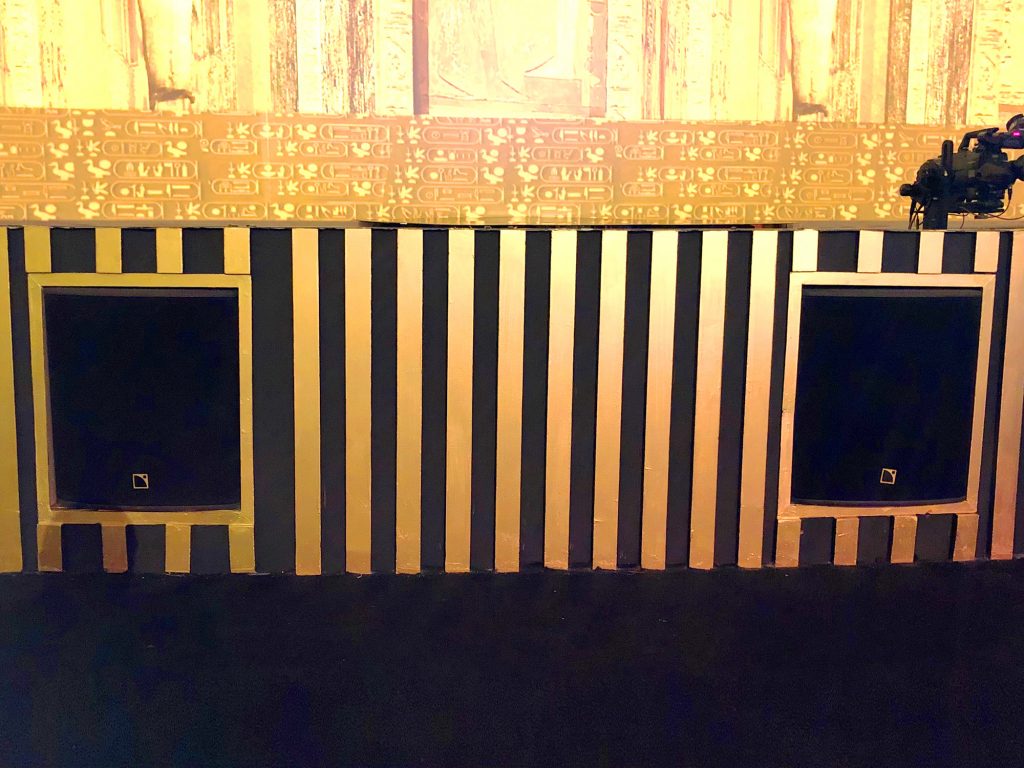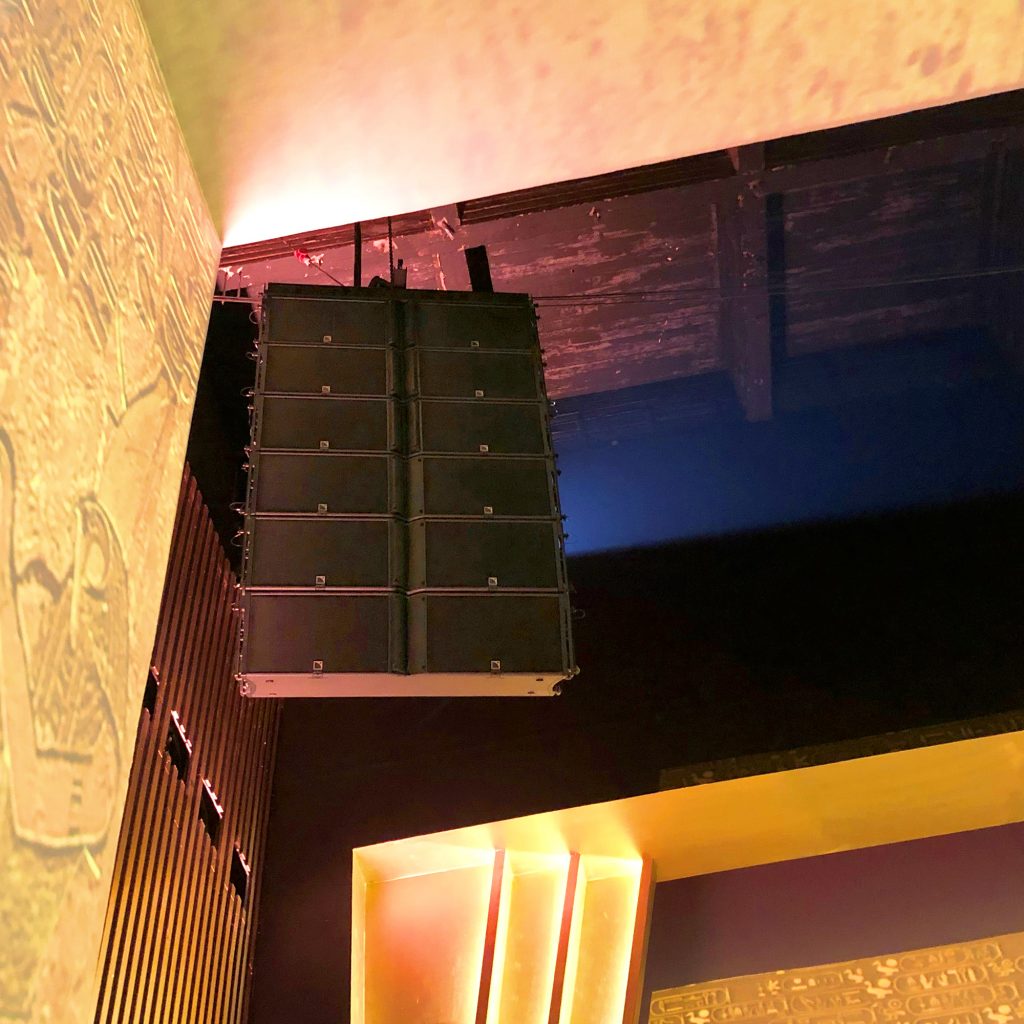L-Acoustics Delivers Golden Sound for Mummies on Parade L-Acoustics Delivers Golden Sound for Mummies on Parade...
Dream Studio deploys K and X Series for the historic pageant celebrating the opening of the new National Museum of Egyptian Civilization
CAIRO, Egypt – May 2021 – The National Museum of Egyptian Civilization (NMEC) in Fustat is one of UNESCO’s projects to help safeguard and preserve Egypt’s cultural heritage. The April opening of the new-build museum was marked with a lavish ceremony, in anticipation of which the Egyptian government undertook a multi-million-dollar investment to re-paint, re-light, and equip downtown Cairo with sound. The epic opening ceremony, which was supervised, directed, and organized by Media Hub Saadi-Gohar Company, combined marching bands, cheering children, synchronized lighting, and a line-up of famous Egyptian actors and singers. The centerpiece of the productions was the transfer of the mummies of the ancient kings and queens of Egypt from their previous resting place in the Egyptian Museum to their new home. Twenty-two mummies in chronological order of their reigns, from the 17th Dynasty ruler, Seqenenre Taa II, to Ramses IX, who reigned in the 12th Century BC, were paraded through in the heart of Cairo as Egyptians – and the world – watched and listened to the historic pageant. Each mummy sat in a nitrogen-filled box – to protect against decomposition caused by oxygen exposure – atop a decorated vehicle disguised to look like an Egyptian boat. Each of these vehicles was fitted with heavy shock absorbers to protect the fragile National treasures from possible bumps in the road, despite the road’s recent re-pavement in preparation for the royal transport. For the occasion, L-Acoustics kept the pharaohs’ sound as golden as their sarcophagi.
“Through this whole parade, live music was played by an orchestra, and the mass choir (inside the orchestral hall in the NMEC) was broadcast widely,” recounted Mafdy Thabet, Chief Engineer and System Designer of Dream Studio. Second engineer and co-designer Youssef Iskander, also of Dream Studio, assisted Mafdy for the event. Dream Studio was contracted to create the sound for the event by Key Films Productions – Adel Abdallah. “Our role was to provide front of house and monitor systems for the orchestra and the choir inside the NMEC Museum,” explains Mafdy. “We also handled mix duties in the museum, the broadcast mix for TV, and the whole parade at Tahrir Square.”
At the new NMEC Museum, L-Acoustics systems covered both indoor and outdoor concert locations. The outdoor area was engineered by Remon Emad, with eight ground-stacked K2 cabinets – four per stack – deployed together with four KS28 subs. Within the orchestral hall, two hangs of six K2 were complemented with six KS28 subs, while four X12 provided frontfill.
Maestro Nader Abbassi conducted the United Philharmonic Orchestra with 80 musicians and 88 singers for a new composition by Egyptian composer Hesham Nazih. The modern music piece, set to song lyrics in old Egyptian, united diverse instrumental elements, including a replica of a Rababa, an ancient Egyptian stringed instrument, and a traditional Nai (pan flute), alongside the philharmonic ensemble. Two L-Acoustics Syva together with a further eight X12 provided monitoring for the performers on stage.
The entire event was transmitted live by the Ministry of Tourism and Antiquities, in addition to being carried on an additional 500 channels. “We transmitted multi-channels via the satellite to deliver the music from NMEC to Tahrir Square, with a separate channel transmitting the picture from Tahrir to the screen of the NMEC theater hall simultaneously, while the live broadcast transmitted the whole event to the TV channels,” explains Mafdy. With Egypt’s President Abdel-Fattah El-Sisi leading the ceremony, UNESCO Director-General Audrey Azoulay, Secretary-General of the World Tourism Organisation (WTO) Zurab Pololikashvili, and other key figures attended the parade. “Participating artists have represented a side of Egyptian soft power that confirms the lead of the most ancient civilization on earth,” stated Minister of Culture Ines Abdel-Dayem.
Delivering high-quality sound for the massive ensemble in the temporary theatre, which was designed by Alchemy Design Studio – Mohamed Fares – Karim Mekhtigian as a temporary construction for the event, was not without challenges. The walls and ceiling of the hall were of ‘drywall’ (gypsum board) construction, with PA hanging points extremely tight to the venue walls due to projection and lighting constraints. With the assistance of L-Acoustics consultant Andrea Taglia, Soundvision software was used to predict and measure acoustic performance. The modeling process resulted in adjusting the angles of the K2 arrays. “For the first three boxes, we used 70-degree angles; for the last three, we increased to 90-degree angles to reduce the reflections on the walls,” explained Mafdy, who worked in conjunction with acoustics consultant Joseph Habib on the setup. “Additionally, using the graphical interface of L-Acoustics Network Manager, we adjusted the FIR of several boxes to ensure consistent sound throughout the venue.”
The royal parade event had to run smoothly and, as Egypt’s past segues into its future, online responses to the live streams of the event expressed pride in the country and kudos for the performers. “After the event, we were very happy with the extremely encouraging feedback of the people working in the music industry in Egypt, both musicians and sound engineers,” Mafdy confirms.
Egypt’s authorities hope that the new museum, opening fully later this month, will help revitalize the tourism industry, which has suffered due to the pandemic. The new exhibits, housed in the NMEC Royal Hall of Mummies, designed to give the illusion of being in the Valley of the Kings in Luxor, are already open to the general public.

Mafdy Thabet (right) with Youssef Iskander handling mix duties at the NMEC Museum, where L-Acoustics systems covered both indoor and outdoor concert locations. 
In the NMEC Museum’s orchestral hall, two hangs of six L-Acoustics K2 were complemented with six KS28 subs, whilst four X12 provided frontfill. – 
Close up of the L-Acoustics X12 frontfill in the orchestra hall. – 
Mummies Golden Parade-4.jpg – Close up of the L-Acoustics K2 in the orchestra hall.